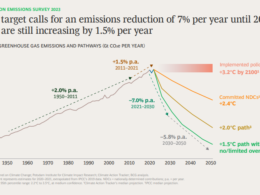healthtransformation
.foundation
Joaquim Cardoso MSc
February 16, 2024
This summary is based on the article “The five new foundational qualities of effective leadership”, published by Strategy+Business written by David Reimer, Harry Feuerstein, and Adam Bryant on June 14, 2023.
What is the message?
Effective leadership in the modern business landscape is characterized by agility, adaptability, authenticity, and a focus on values.
Traditional metrics of efficiency and financial performance are no longer sufficient in an environment defined by uncertainty, intangible assets, and stakeholder activism.

What are the key points?
Shift in Leadership Paradigm: The article highlights a shift from quantifying leadership through metrics to understanding qualitative attributes that lead to success. Leaders must focus on behaviors, team-building, talent development, and alignment with organizational values.
Foundational Qualities of Effective Leadership:
- Leading with a compass in the absence of a map.
- Embracing uncertainty as a team sport and instilling adaptability across the organization.
- Ensuring alignment between words and actions to build trust and credibility.
- Mastering the complexities of matrix structures and fostering collaboration.
- Demonstrating authenticity, self-awareness, and values-driven decision-making.
Examples of Leadership Challenges and Solutions:
- Siemens’ shift away from traditional performance management toward a framework focused on company-wide priorities.
- Sasan Goodarzi’s emphasis on taking calculated risks and fostering a culture of innovation at Intuit.
- The importance of aligning resource allocation with strategic priorities, as exemplified by a large technology company.
What are the key examples?
Siemens’ adoption of a new performance management framework.
Sasan Goodarzi’s leadership approach at Intuit.
Challenges faced by a large technology company in aligning actions with stated values.
Case studies and insights from boardroom discussions and CEO succession planning.
Conclusion
The article concludes by emphasizing the need for a departure from traditional leadership models and the adoption of a more nuanced approach that aligns with the realities of today’s business environment.
By focusing on the five foundational qualities identified, boards and CEOs can make higher quality decisions and build sustainable organizations capable of thriving amidst uncertainty and change.
To read the original publication, click here.











